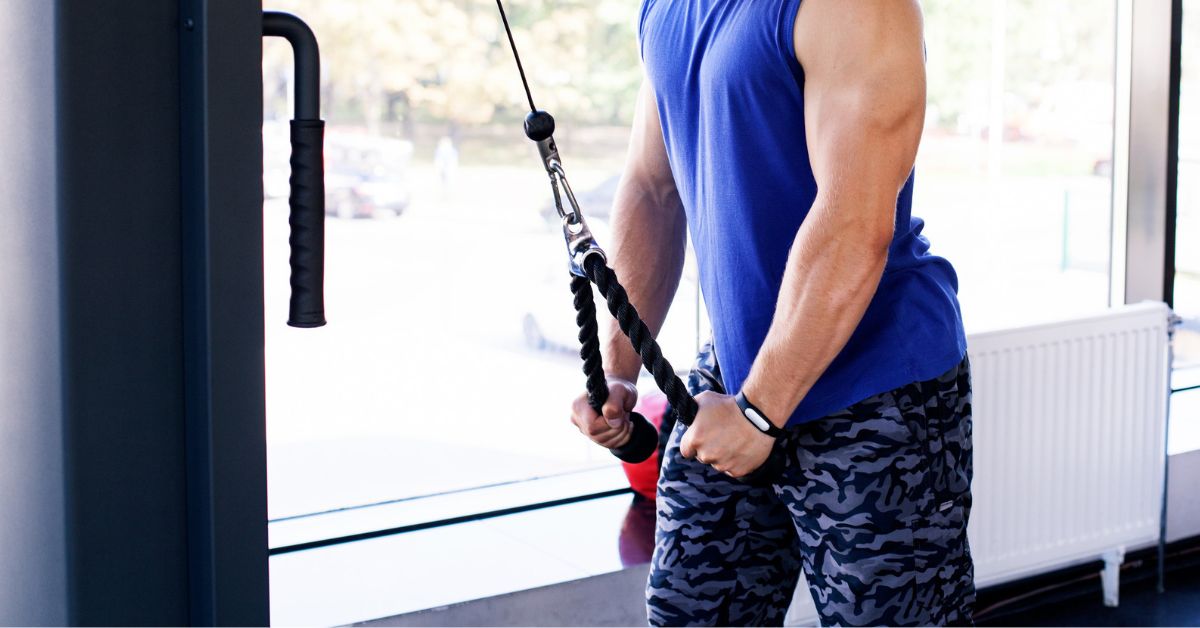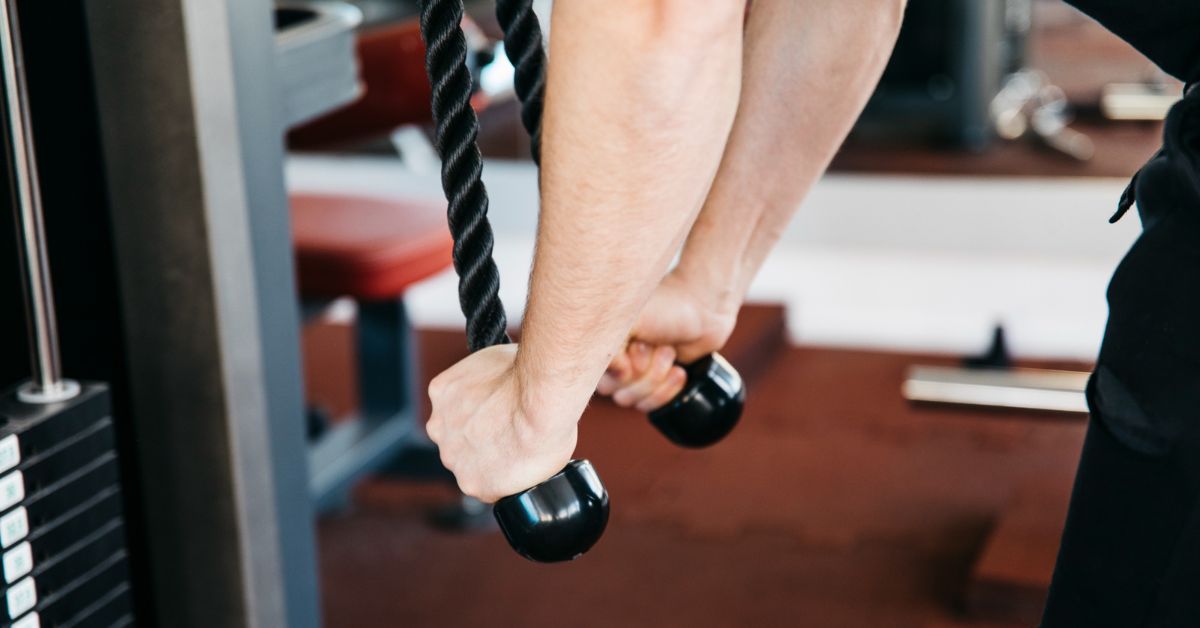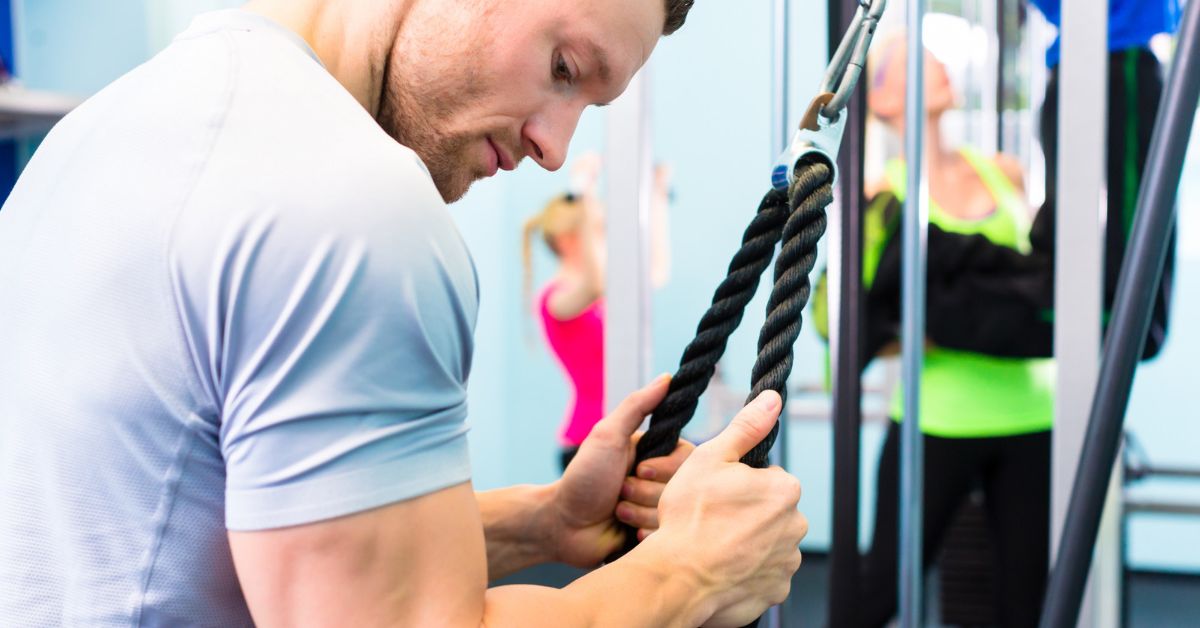
Cable Arm Workouts: A Comprehensive Guide
Building strong and sculpted arms is a fitness goal that resonates with many. Whether you want to enhance your athletic performance, improve functional strength, or tone up, resistance-based exercises can help. The cable machine is one of the best tools for doing this since it allows for versatile, targeted training. As cable arm workouts maintain consistent tension on your muscles, you can more efficiently work your biceps, triceps, and forearms.
What sets cable machines apart from traditional free weights is their adaptability. Fitness enthusiasts and beginners alike can benefit from their wide range of motion, adjustable resistance, and safer workout options. This guide will explore the benefits, key exercises, and tips to maximize your results with cable arm workouts.
Benefits of Cable Arm Workouts
Cable arm workouts offer a unique and effective way to strengthen and tone your arms. Some of the benefits of cable machine arm workout are as follows:
Versatility
Cable machines are incredibly adaptable, offering a wide variety of exercises that target different parts of your arms. Whether you’re focusing on the biceps, triceps, or forearms, the machine gives you endless options. You can also adjust the angle and height of the cables, enabling unique movements that are not possible with traditional free weights.
Continuous Tension
One of the biggest advantages of cable arm workouts is the constant tension they provide. As opposed to free weights, where resistance lessens at certain points, cables keep your muscles engaged throughout. This leads to improved muscle activation, helping you build strength and definition more efficiently.
Improved Muscle Engagement
Cable machines are excellent for isolating specific muscles. With precise control, you can make sure the intended muscle does the work, minimizing compensation. This is particularly helpful for achieving balanced muscle development.
Safety
Cable workouts are safer than many other forms of resistance training, as they offer controlled movement patterns and lower the risk of injury. For example, you’re less likely to strain your joints or drop heavy equipment when using a cable machine. This makes them an ideal choice for beginners and experienced lifters alike.
8 Best Cable Arm Workouts

Incorporating the right cable exercises into your routine can help you effectively target your biceps, triceps, and forearms. Below are some of the best arm workout with cable machine, complete with instructions and tips to maximize your results.
1. Biceps Cable Curls
- How to Perform: Attach a straight bar to the low pulley of a cable machine. Stand upright, holding the bar with an underhand grip. Keep your elbows close to your sides as you curl the bar toward your chest. Slowly lower it back to the starting position.
- Tips: Avoid swinging your body or using momentum to lift the weight. Focus on keeping tension in your biceps throughout the movement.
2. Triceps Pushdowns
- How to Perform: Attach a straight or V-bar to the high pulley. Stand upright, gripping the bar with an overhand grip. Keep your elbows close to your torso as you push the bar down until your arms are fully extended. Slowly return to the starting position.
- Tips: Keep your elbows stationary and avoid locking them out at the bottom of the movement.
3. Cable Rope Hammer Curls
- How to Perform: Attach a rope to the low pulley. Hold the rope with a neutral grip (palms facing each other). Curl the rope upward, squeezing your biceps at the top, and then lower it back down.
- Tips: Focus on controlled movements to fully engage the biceps and forearms.
4. Overhead Cable Triceps Extension
- How to Perform: Attach a rope to the high pulley. Stand with your back to the machine and grasp the rope with both hands. Extend your arms overhead and slowly lower the rope behind your head, then push it back up to the starting position.
- Tips: Keep your elbows close to your head and avoid flaring them out.
5. Reverse Cable Curls
- How to Perform: Attach a straight bar to the low pulley. Hold the bar with an overhand grip and curl it toward your chest. Lower it slowly back to the starting position.
- Tips: This exercise targets the forearms and brachialis, so ensure your grip is firm and movement is controlled.
6. Single-Arm Cable Curls
- How to Perform: Attach a D-handle to the low pulley. Stand sideways to the machine and grip the handle with one hand. Curl the handle upward, keeping your elbow stationary, and then lower it back down.
- Tips: Work one arm at a time to address any strength imbalances.
7. Crossbody Cable Curls
- How to Perform: Attach a D-handle to the low pulley. Hold the handle with one hand and curl it across your body toward your opposite shoulder. Slowly return to the starting position.
- Tips: Focus on controlled movement to ensure maximum bicep engagement.
8. Triceps Kickbacks with Cable
- How to Perform: Attach a D-handle to the low pulley. Bend forward slightly and hold the handle in one hand. Keeping your upper arm stationary, push the handle backward until your arm is fully extended. Slowly return to the starting position.
- Tips: Maintain a neutral spine and avoid swinging your arm.
How to Build a Cable Arm Workout Routine

A cable arm workout routine involves balancing exercises, adjusting intensity, and planning your schedule. Here’s how to design a well-rounded routine:
1. Combine Exercises for Balanced Arm Development
Include exercises that target all major arm muscles—biceps, triceps, and forearms. For example:
- Biceps: Biceps Cable Curls, Crossbody Cable Curls.
- Triceps: Triceps Pushdowns, Overhead Cable Triceps Extension.
- Forearms: Reverse Cable Curls, Cable Rope Hammer Curls.
2. Structure Your Sets and Reps
The number of sets and reps you perform depends on your fitness goals:
- For Strength: Use heavier weights with 4-6 reps per set for 3-4 sets.
- For Muscle Growth (Hypertrophy): Perform 8-12 reps per set for 3-4 sets with moderate to heavy resistance.
- For Toning and Endurance: Opt for lighter weights with 12-15 reps per set for 3-4 sets.
3. Plan Workout Frequency
Train your arms 1-2 times per week to allow adequate recovery. Ensure you give your muscles at least 48 hours of rest between sessions to prevent overtraining.
4. Use Progressive Overload
Gradually increase the resistance or number of reps over time to challenge your muscles and continue building strength and size. For example, add a small amount of weight every 2-3 weeks or increase your reps slightly.
5. Include Rest Periods
- Rest for 60-90 seconds between sets for hypertrophy.
- For strength-focused workouts, increase rest to 2-3 minutes to fully recover.
- For endurance, keep rest periods shorter, around 30-45 seconds.
6. Warm-Up and Cool Down
Start with a dynamic warm-up to increase blood flow and prepare your muscles for the workout. Include stretches and light movements targeting the arms. Finish with a cool-down to enhance recovery and reduce muscle soreness.
Common Mistakes to Avoid
Avoiding common mistakes in cable arm workouts is crucial for achieving optimal results and preventing injuries. Here are some pitfalls to watch out for:
1. Poor Form and Posture
Using incorrect forms, such as arching your back or flaring your elbows, reduces the effectiveness of the exercise and increases the risk of injury. Focus on maintaining proper posture, keeping your core engaged, and using controlled movements.
2. Using Too Much Weight
Selecting a weight that’s too heavy can lead to improper technique and reliance on momentum rather than muscle engagement. Start with a manageable resistance and gradually increase it as your strength improves.
3. Neglecting Full Range of Motion
Short, incomplete movements fail to fully engage the target muscles. Perform each exercise through its full range of motion to maximize muscle activation and growth.
4. Skipping Warm-Up and Cool-Down
Jumping straight into heavy cable exercises without warming up can strain your muscles and joints. Similarly, skipping the cool-down phase may lead to increased soreness and slower recovery. Always dedicate a few minutes to both.
5. Overtraining
Training your arms too frequently without proper rest can lead to muscle fatigue and hinder progress. Allow at least 48 hours of recovery between arm-focused workouts.
Read More: 7 Benefits From Sauna After Workout
Conclusion
Cable arm workouts are an effective way to build strength and tone your arms. They provide versatility, safety, and continuous tension for muscle engagement. Including targeted exercises will help you work your biceps, triceps, and forearms.
Avoid common mistakes like poor form or overtraining to maximize results. When you use cable machines consistently, properly, and gradually overload them, you’ll see results. Start incorporating these exercises into your routine for stronger, sculpted arms.



